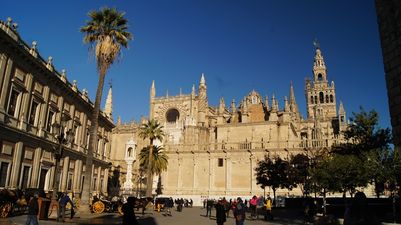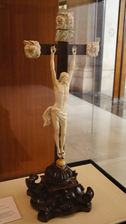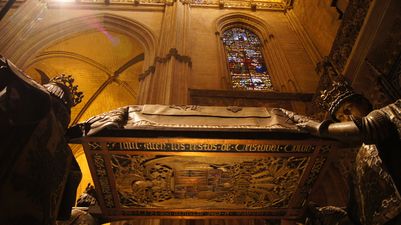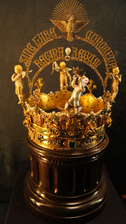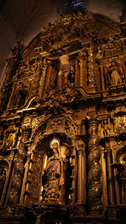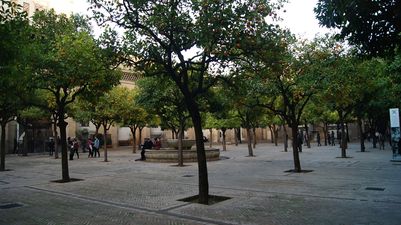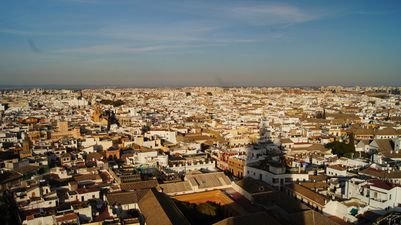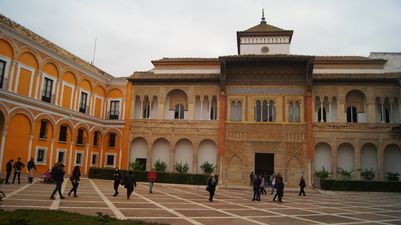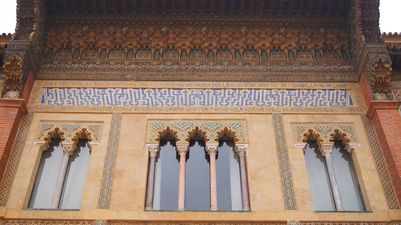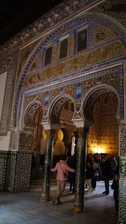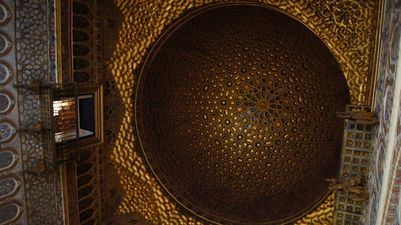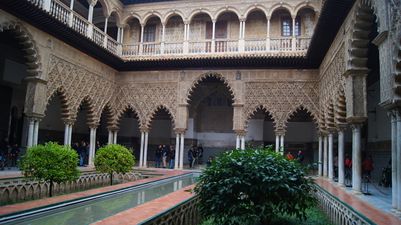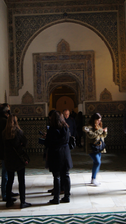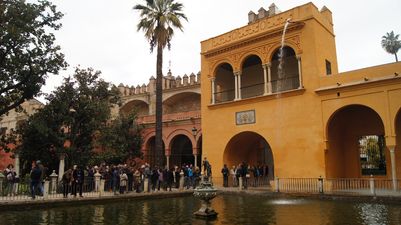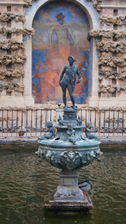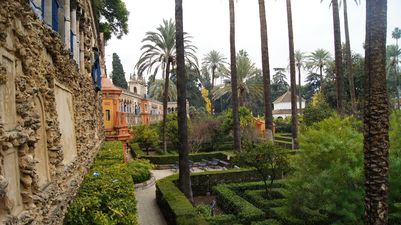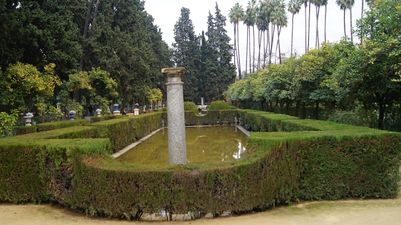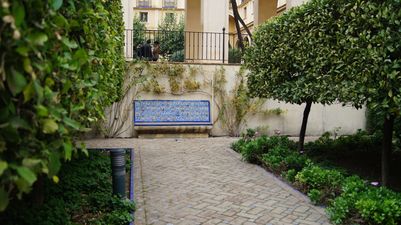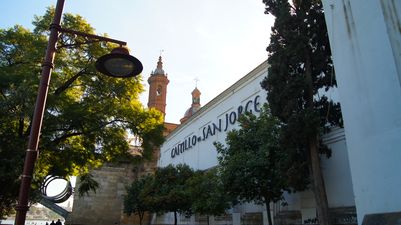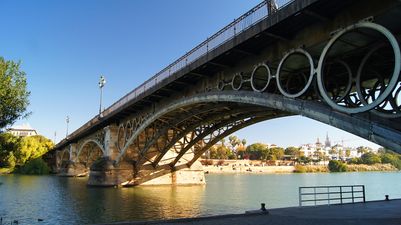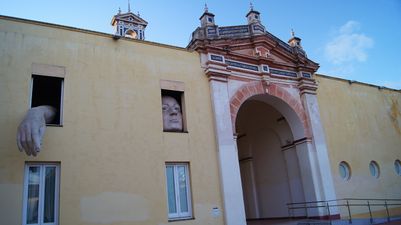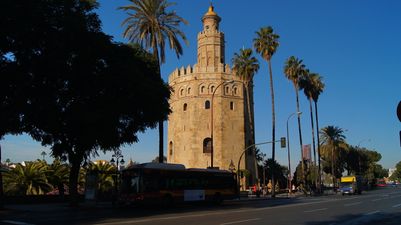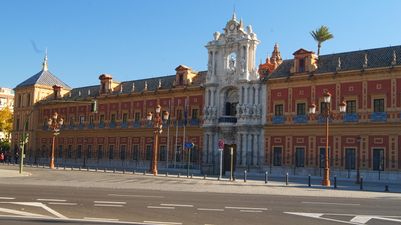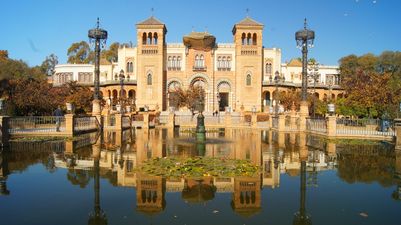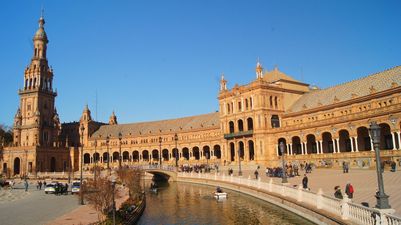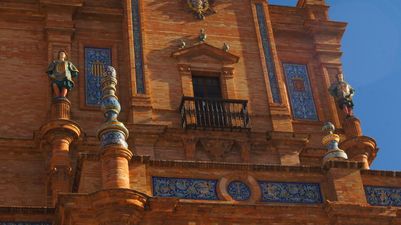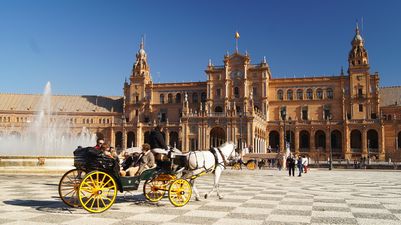Seville (December 2017)

Seville (December 2017)
Seville is the largest city of the largest spanish community: Andalusia, and it is located by the Guadalquivir river—the name comes from the arabic الوادي_الكبير (pronounced as al-wādi al-kabīr) which means big river. The history of the city goes back to the Roman times: the city was founded by Hercules and its original name was Hispalis. During his period, Hispalis was one of the largest industrial centres of Hispania (which later on became España, which in spanish are pronounced almost identically).
The arabs conquered the city in the year 712 and became a stronghold of the Al-Ándalus (the moorish territories in the Iberic peninsula and whose capital city was Córdoba). The muslim dominance over the peninsula extended for over 700 years, which is more than enough to leave their architectural print on the andalusian cities.
The reconquest, a christian military effort to recover the control over the Iberic peninsula, started from the only region of Spain that was never conquered by the moorish: The kingdom of Asturias. In 1248 the city returned to the Castilian crown but the muslims were allow to stay in the city, and from such a coexistence rose the so-called Mudéjar art, which is the result of the mixture between the muslim and the christian cultures.
In 1492, with Columbus' arrival to the Americas, Seville became the economic center of the Kingdom from which the crown managed the trips to and the earning brought from the colonies. In fact, the crowed that joined Columbus on his first trip to the Americas left from Sevilla, which, among other things, is the reason why the use of the latin american spanish is similar to the sevillana one, for instance the lack of distinction in the pronunciation of the s and the c or z (referred to as cecéo).
Cathedral
Seville's cathedral is the third largest in the christian world after Rome's St. Peter and London's St. Paul, and it is one of the greatest exponents of the Mudéjar architecture
Alcazar
In Spain the word Alcazar means a palace that is (or was) the official residence of the Kings. However, this one has nothing to do with the Castilian Alcazares that I visited before in Segovia and Madrid. This one is not made in a defensive position, but instead was build as a leisure palace. The extended gardens were though as the place to run away from the heat during the tough sevillan summers or to rest after lunch in a cold autumn. The decoration of the Alcazar is a mixture of the moorish symbology and techniques with those of the christians artists.
Triana & La Cartuja
Triana and La Cartuja are two islets on the west back of the Guadalquivir, next to Seville. Most of the porcelain work displayed in Seville's buildings were made by potters from Triana (alfareros trianeros). Also, the Spanish Inquisition (the Catholic institution that persecuted infidels, i. e., people with other religions or that though differently from the catholic power) was particularly strong in the Sevillian streets. The Castillo de San Jorge was the Inquisition headquarters of the Inquisition, located beside Isabel's bridge.
Outside the center
Seville's city center is the largest one in Europe with an area of about 2 km2, but still some of the city highlights lie outside it:
- The Torre del Oro beside the river, build in three stages in three different periods and was, supposedly, used by princes to seduce maidens.
- San Telmo's Palace is currently the headquarters of the Andalusian Government.
- The Museum of Popular Arts and Traditions is hosted in a Neo Mudéjar palace at Maria Luisa park.
- The Plaza de España, also in the Maria Luisa park, is one of the most majestuous buildings of Seville.

